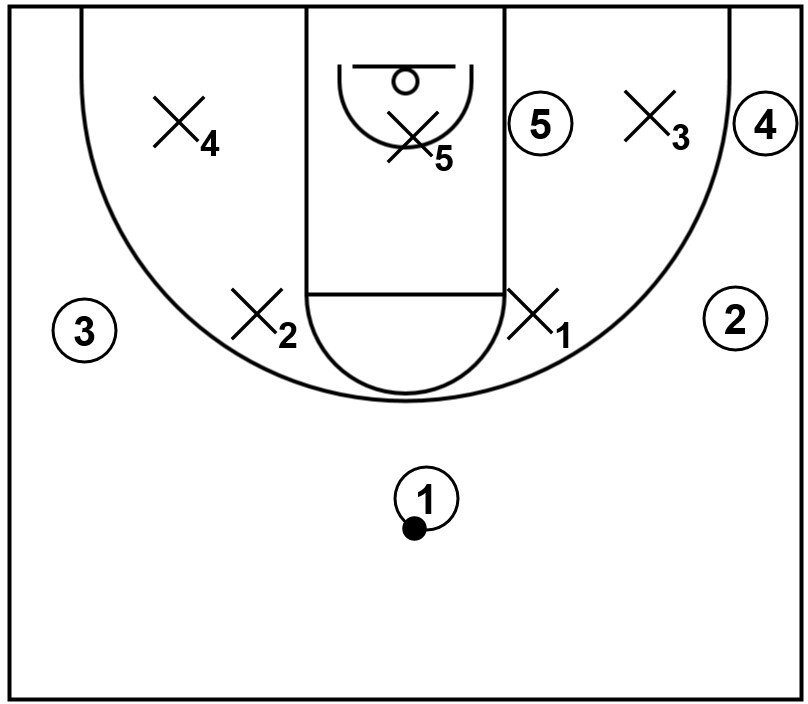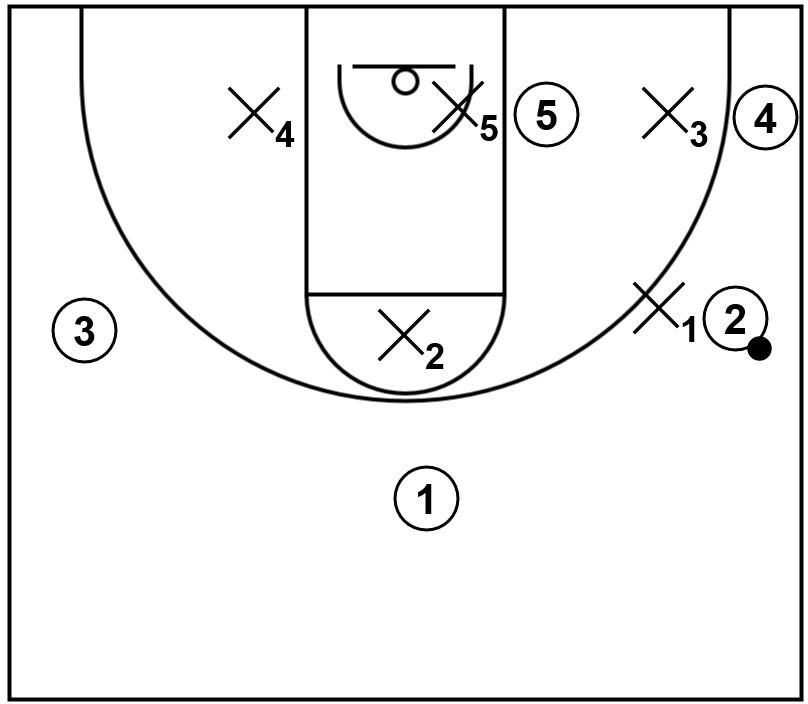General information about foul trouble
Basic definition
Foul trouble is a general term commonly used to describe a situation that happens in a basketball game when a player is on the verge of reaching their maximum number of allowable fouls, especially earlier than desired or expected.
Number of fouls that generally indicate foul trouble
Generally speaking, common indicators of foul trouble occurs when a player accumulates two or three personal fouls in the first half of a basketball game or that same player is only one personal foul away from being disqualified via fouling out of the game in the second half.
However, foul trouble is also generally determined by the maximum number of allowable fouls that a player is able to commit prior to disqualification, which is set within the rules of a basketball league or organization.
For example, within the NBA and WNBA rules, a player can accumulate six personal fouls prior to fouling out of the game.
On the other hand, within the rules of FIBA, NCAA men’s and women’s college basketball, as well as NFHS high school basketball, a player has a limit of five personal fouls before that disqualification occurs.
So, with all of that said, in the NBA/WNBA, when a player accumulates at least three personal fouls in the first half or that player has reached five personal fouls in the second half, those are generally considered to be instances of foul trouble.
Conversely, within a basketball game that utilizes the rules of FIBA, NCAA, or NFHS, when a player accumulates at least two personal fouls in the first half or that player has reached four personal fouls in the second half, those situations are general indicators of foul trouble.
Typical outcomes after player gets into foul trouble
Substitution
Generally speaking, once a player gets into foul trouble, coaches will usually opt to temporarily replace that player with a substitute for a certain amount of time, ultimately to prevent the player from committing more fouls and exacerbating the problem.
This will typically happen if that player is a part of the starting five and/or that player gets into foul trouble, particularly during the first half of a game.
For example, let’s say that during the first quarter of a high school basketball game under NFHS rules, the starting point guard for Team A commits two personal fouls as an on-ball defender against the opposing point guard of Team B.
From there, the starting point guard can only accumulate three more personal fouls before fouling out of the game.
When that occurs, the head coach will more than likely substitute in the reserve point guard or possibly shift a starting wing player such as a shooting guard to the point guard position, especially if that wing player has combo guard abilities.
Extended time on the bench
Additionally, the coach may choose to sit the starting point guard for an extended amount of time on the bench such as the rest of the first half.
The primary downside to going that route would generally depend on how valuable the starting point guard is for the team as a whole and/or the skill level in addition to team chemistry of the other players on the court.
Put another way, the coach would have to determine how well the other players could pass, dribble, screen, cut, score, and communicate without the starting point guard being on the floor.
If those members are able to do that, then the starting point guard could sit for most, if not all, of the entire first half.
Afterwards, on the positive end, the starting point guard could be readily available for the bulk of the second half, assuming the point guard does not pick up two unnecessary fouls in the third quarter or early in the fourth quarter of the game.
Zone defense
Conversely, let’s say that the other players do not play as well when the starting point guard is not on the floor and/or the team does not have a viable reserve to play the point guard position.
When that happens, the coach could implement a zone defense such as the 2-3 zone to potentially lower the chances of the starting point guard committing more undesirable personal fouls.
This type of strategy could potentially work, especially if the opposing team does not possess multiple three-point shooters and on top of that, the point guard who is in foul trouble would only need to cover an area of the court as opposed to guarding an opposing player, especially with extended pressure defense.
The diagrams below attempt to demonstrate these concepts, particularly via a 2-3 zone.
Additionally, each of the offensive and/or defensive players on any diagrams below are generally represented by the standard basketball positions, unless otherwise noted.
In essence, 1 and X1 are the offensive and defensive point guards, respectively.
2 and X2 are the offensive and defensive shooting guards, respectively.
3 and X3 are the offensive and defensive small forwards, respectively.
4 and X4 are the offensive and defensive power forwards, respectively.
5 and X5 represent the offensive and defensive center positions, respectively.
Initial setup of 2-3 zone

This diagram shows the initial setup of the 2-3 zone while the defensive point guard, indicated as X1, is in foul trouble. Notice how X1 as well as the other defenders are not deliberately guarding any of the offensive players but instead, they are covering certain areas of the court.
Pass from top to wing vs. 2-3 zone

Next, notice that when 1 passes the ball with 2 as the receiver, the zone defenders shift in that direction.
Ball on wing vs. 2-3 zone

In reference to the adjacent diagram here, notice that as the ball shifted to the wing area, the zone defenders, and in particular, X1 is not guarding too closely to the ball.
In this case, running the zone can help X1 from receiving additional fouls, assuming that X1 needed to be in the game, especially for offensive purposes.
What’s more, the zone defense can potentially keep players out of foul trouble in the first place so that is something to consider.
Nevertheless, the zone defense can be disadvantageous against a team that features offensive players with shooting capability, among other potential issues such as rebounding.
Wing vs. on-ball pressure

For demonstration purposes, the diagram above shows X1 putting defensive pressure on the ball, which could be implemented via man to man defense or by way of defensive action such as a match-up zone.
In essence though, if X1 was in foul trouble or was on the verge of being in that state, then implementing pressure in this manner could lead to more fouls.
Basic defensive actions to limit foul trouble
In general, defensive players should simply follow basic defensive principles to potentially limit foul trouble, which includes actions such as executing a proper stance and performing correct lateral sliding.
Execute proper stance
To execute a proper stance, defensive players should have their feet slightly wider than shoulder width apart, their knees bent, and their back straight while maintaining balance.
Also, defenders should try to remain on the balls of the feet and not stand flat-footed. Moreover, defenders should have their hands up with their arms extended away from their sides.
Perform correct lateral sliding
To perform correct sliding, defensive players should move their feet laterally from side to side with one foot leading the other.
For example, if a defender wants to move to their right, which would be the left side of the court from the offensive team’s point of view, then the defender should move laterally from side to side with the right foot leading first followed by the left foot thereafter.
Conversely, if a defender would like to move to their left, which would be the right side of the court from the offensive team’s point of view, then the defender should move laterally from side to side with the left foot leading first followed by the right foot afterwards.
Also, it is important to note that a defender should try to keep their feet as close to shoulder width apart as possible while executing the lateral slide.
In other words, the defender’s feet should never be too close together as that would take away the defender’s lateral quickness.
Furthermore, it is also important to mention that a defender should not cross their feet when executing the lateral slide.
If that were to occur, not only does this eliminate the defender’s ability to effectively slide their feet from side to side, but it also could cause the defender to lose balance.
Don’t reach in aimlessly
Defensive players, particularly as on-ball defenders, should not reach in aimlessly in an attempt to steal the ball from an offensive player as that could lead to a personal foul as well as foul trouble.
This is even more of a factor if the offensive player is properly protecting the ball by keeping it on the opposite side of their body and away from the on-ball defender.
Instead, defensive players should mainly focus on executing on-ball pressure and moving their feet via the defensive slide technique to ultimately contain the offensive player in possession of the ball.
Nevertheless, it should be noted that there are certain instances when a defensive player, specifically as an on-ball defender, could attempt to steal the ball.
Essentially, if the basketball is between the offensive player in possession of it and the on-ball defender, then that is usually a reasonable time to go for a steal.
This primarily happens when the offensive player attempts to execute a dribble move such as a crossover or the offensive player simply does not protect the ball properly while dribbling it.
Basic offensive actions to limit foul trouble
No rush
Generally speaking, to potentially limit the chances of foul trouble, offensive players should play under control and not be in a rush with their movements.
Avoid charging
Additionally, players should avoid charging into defenders, which could also lead to possible foul trouble. Essentially, an offensive player is typically assessed a charging foul after they illegally push or move a part of their body into the torso of a defender who is in a legal guarding position.
Related: Charging, on-ball defender in transition establishes legal position – NBA Video Rulebook
This is particularly common during or immediately after an offensive player dribbles the basketball.
In some instances, an offensive player could even pass the ball to a teammate but their momentum may still cause them to run into a defensive player.
That particular situation is generally known as a pass and crash and it would still result in the offensive player getting assessed an offensive foul for charging.
Related: Charging, pass & crash play – NBA Video Rulebook
Avoid illegal screen
An illegal screen generally occurs when a offensive player makes prohibited contact while setting a screen and/or the offensive player does not allow an opposing defender, who would be the target of the screen, enough time and/or distance to avoid the screen.
Therefore, players should generally avoid getting assessed an illegal screen by remaining stationary during the moment of the screening action.
Additional resources to learn more about fouls in general
RULE NO. 12: Fouls and Penalties – NBA Official
Men’s and Women’s college basketball rule books – NCAA Publications